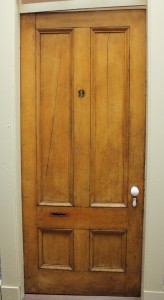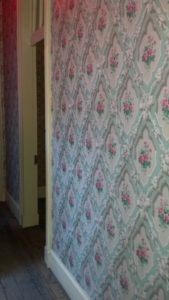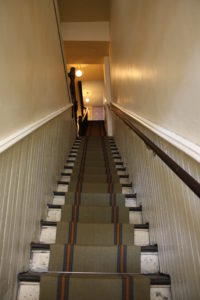Just recently, the Red Cross history team toured the restored Clara Barton’s Office of Missing Soldiers at No. 9, 437½ 7th Street. The office is located in a former Washington, D.C., boarding house, where Clara Barton rented rooms during and after the Civil War.
While Clara provided relief to the Civil War wounded, she accumulated a wealth of information about the men and their regiments. In the final days of the war, she was responding to families inquiring about men who had been reported missing. Seeing a pressing need, Barton secured permission from President Abraham Lincoln to start an Office of Missing Soldiers. By 1869, she and her assistants had received and answered over 63,000 letters and identified more than 22,000 missing men.
That same year, in need of rest, Barton traveled to Europe. The boarding house owner stored Clara’s belongings in the attic above her rooms and they remained there, untouched, for over 120 years, until 1996. At the time, the building was slated for demolition, but the presence of Clara’s belongings and remnants of the Missing Soldier’s Office reset the course. After several years, restoration work began, managed by The National Museum of Civil War Medicine, headquartered in Frederick, Md.
Visitors to the space enter a main floor lobby with an exhibit highlighting life in Washington, D.C., during the Civil War. Two flights of steps provide access to rooms carefully restored to the period when Barton lived and worked in the boarding house. Some special features include reproduction wallcoverings based on existing wallpaper found in the rooms. According to one of the tour guides, Clara wallpapered one of the walls herself.
Carpet fragments from the period were found in the attic, and inspired the reproduction runner on the stairs. The lighting resembles period gas lights—complete with the simulated flickering flame.
Although it’s taken nearly two decades and the efforts of many dedicated people, the former Office of Missing Soldiers is complete and open to the public for tours providing a look back at a mid-19th century Washington and a greater understanding of Clara Barton’s humanitarian journey.


